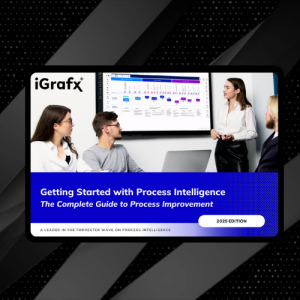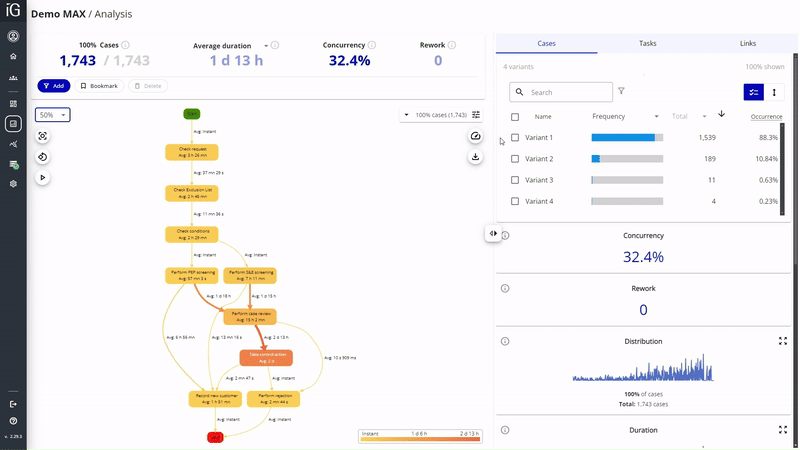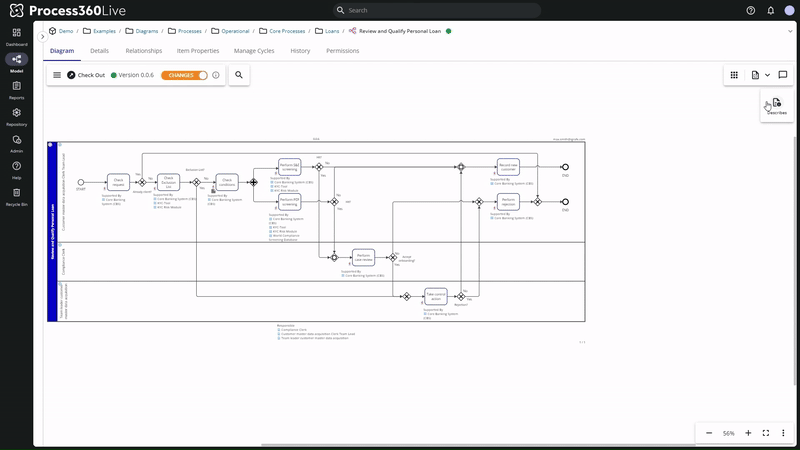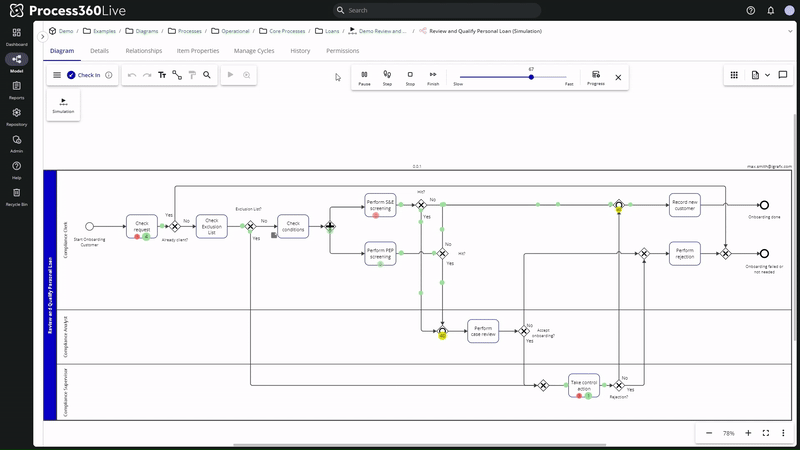Process excellence for higher efficiency and lower costs
Transform your business with process intelligence purpose-built for continuous improvement.
Achieving Process Excellence
Discover the Benefits of iGrafx
01

Increase Productivity
Gain objective visibility into how processes are performing today and quickly uncover inefficiencies, bottlenecks, and opportunities for improvement. Use a ‘single source of truth’ to build ideal future-state processes.
02

Reduce Costs
03

Ensure Compliance
Ensure processes are compliant with external regulations and internal policies. Achieve faster, cheaper audits, avoid financial penalties, and execute continuous improvement to adhere to new regulations easily.
Gettting Started with Process Intelligence
Organizations need to adopt advanced technology solutions that drive operational excellence, and process intelligence is one of the most effective ways to achieve this. However, choosing the right solution can be a daunting task.
This guide provides a comprehensive overview to help you navigate through the process, from understanding what process intelligence is, to evaluating the right platform and selecting the vendor that suits your business needs.

The iGrafx Approach
Discover
Discover how your business processes run today to uncover inefficiencies, bottlenecks and opportunities for improvement.
To achieve true digital transformation, you need comprehensive visibility into your as-is processes. iGrafx offers a suite of capabilities that enable this, including process mining, task mining, and process mapping.
Design
Collaboratively design the ideal future versions of your processes, test improvement ideas and understand their impact before investing time.
Effective continuous process improvement requires robust planning and intelligent decision making. iGrafx’s process design solutions, such as our BPM software and process simulation capability, allows PEX professionals to model and test proposed improvements without relying on guesswork.
Optimize
Optimize your processes for maximum performance based on data-driven AI and ML statistical prediction models.
Achieve gold standard versions of your processes by implementing intelligent optimizations with iGrafx’s predictive analytics and process monitoring tools.
Capabillity Highlights
The all-in-one process intelligence platform purpose-built to drive process excellence.
Process Mining
Automatically understand how your as-is processes are running based on the data that exists in your systems, providing you 100% objective visibility.
- Intuitively analyze processes with concurrency detection
- Find the perfect perspective with customizable dashboards
- Audit like a pro with conformance checking
- Get proactive with predictive analytics
- Stay vigilant with process monitoring
- Maintain operational resilience with risk analytics


Process Design
Digitally model your enterprise through objects, and their relationships, and create gold standard, operationally resilient process models based on data-driven analysis.
- Build comprehensive models
- Establish a strong process governance framework
- Enable cross-team collaboration & continuous improvement
- Measure, monitor & optimize process performance with process mining
- Align BPM with strategic business objectives
Process Simulation
Understand the impact of process change by identifying new bottlenecks that might be created, enabling prioritization of highest-ROI opportunities.
- Tailor a simulation model to match your specific operations
- Match the actual pace of your business
- Let the data drive decision making
- Create a simulation baseline with process mining
- Contextualize simulations with the process repository
- Benefit from the pinpoint accuracy of discrete event simulation

Resources
Featured blog
01
Agentic AI thrives in dynamic, exception-rich environments – but only when processes are well-understood and modeled. Process modeling and simulation prepare organizations for every stage of AI maturity – from today’s automation and GenAI to tomorrow’s Agentic AI – by testing scenarios, predicting outcomes, and
Talk to a process intelligence expert
You have questions, we have answers
What is Process Excellence?
What is the difference between Process Excellence and Operational Excellence?
Process excellence optimizes individual workflows for peak efficiency and quality, focusing on specific steps. Operational excellence is broader, encompassing the entire organization to create a culture of continuous improvement across all processes, systems, and teams, ensuring holistic effectiveness and sustained customer value.
What is a simple example of Process Excellence?
What is a Process Excellence structure?
How do you implement Process Excellence in your business?
- Define: Clearly identify the processes to improve and their goals.
- Measure: Establish metrics to quantify current performance.
- Analyze: Identify root causes of inefficiencies or defects.
- Improve: Design and implement solutions to optimize the process.
- Control: Monitor performance to sustain gains and ensure continuous improvement. This often utilizes methodologies like Lean Six Sigma.


